The Funny Lady Blogathon: Isabel Jewell
 What’s your best-remembered Isabel Jewell performance?
What’s your best-remembered Isabel Jewell performance?
Is it the ill-fated Laury Palmer, who meets her end in Born to Kill (1947) at the hands of her psychotic boyfriend? Or the seamstress who is condemned to die in A Tale of Two Cities (1935)? Maybe it’s Gloria in Lost Horizon (1937), the cynical, consumptive prostitute. Or Emmy Lou, the Southern belle prostitute – er, pardon me – “hostess” – in Marked Woman (1937). Or perhaps it’s another Emmy from the South – that “white trash” in Gone With the Wind (1939).
Whichever performance is your favorite, there’s no denying that this pint-sized performer may have been slight on height but she was tall on talent! And since this is the Funny Lady Blogathon, I’m pleased to examine the distinct gifts that Isabel Jewell had for conveying the lighter side of life.
I’m shining the spotlight today on my three favorite comedic performances by Isabel Jewell – but first, let’s take a look behind the screen . . .
The Early Years
Isabel Jewell was born on July 19, 1910 (or, depending on which source you believe, 1907, 1911, or 1913) in Shoshoni, a small town in Wyoming. Her great-grandparents were among the first settlers in Pine Island, Minnesota, in the mid-1850s, and her grandparents owned a drugstore there. In 1905, Isabel’s parents, Emory and Livia, moved to Shoshoni where her father, a doctor and researcher (who continued to work even after going blind nearly 20 years before his death), gained acclaim for his research into Rocky Mountain Spotted Fever.
Young Isabel (whose height would top off at a petite four feet, eleven inches) knew from an early age that she wanted to be an actress – and she wasn’t alone.
“My mother always wanted me to be an actress, dreamed of it, talked about it, and very little else,” she told a reporter in 1935. “Even before I was born, she wanted a girl so that girl would be an actress.”
Isabel attended high school in Faribault, Minnesota, where she prepared for her desired career by taking classes in elocution, dancing, and voice production, and at Hamilton College in Lexington, Kentucky, she studied violin and piano, specialized in Latin, and was president of the Chi Delta Phi literary society. After her graduation, she pursued her childhood dream with a vengeance, honing her craft in stock companies from Nebraska to Illinois.
“I went to Chicago and played small parts with the Mintern Stock Company,” she recalled. “I willed them into taking me. Young, totally inexperienced, not beautiful in the luscious movie tradition, it was my unyielding determination and nothing else, that got me the job.”
After more than two years in stock, Isabel made her Broadway debut in Up Pops the Devil in 1930 – reportedly stepping into the role with less than three hours’ rehearsal. Two years later, she landed a role in another Broadway production, Blessed Event, whose cast included Allen Jenkins and Herman J. Mankiewicz, who played the part of a waiter (and went on to become an acclaimed, Oscar-winning screenwriter – not to mention grandfather of TCM co-host Ben Mankiewicz). When plans were announced to bring the play to the big screen, Isabel and Allen Jenkins were brought west to reprise their original roles. (The picture was not only Isabel’s screen debut – Blessed Event was also the first film for actor Dick Powell.) The film’s starring role – based on famed columnist Walter Winchell – was given to actor Lee Tracy. Before long, Tracy and Isabel were an item.
Isabel and Lee
In 1933, both Isabel and Lee Tracy inked contracts with MGM – Tracy was seen to good advantage in such MGM hits as Dinner at Eight (1933), Bombshell (1933), and Advice to the Lovelorn (1933) – Isabel also appeared in the latter two – but the good times came to a screeching halt in November of that year. Tracy was filming Viva Villa (1934) on location in Mexico – in fact, according to news reports, Isabel was all set to join him – when he was arrested for insulting the Mexican government and “offending public morals.” According to news reports, Tracy, clad only in a blanket, appeared on his balcony during a parade celebrating the anniversary of the Mexican revolution. Tracy allegedly shouted insults while a contingent of cadets from a nearby military academy passed by. To make matters worse, it is alleged that the blanket slipped off. After the incident, MGM fired Tracy from the movie and cancelled his contract. Tracy later admitted that he was “feeling the drinks” he’d consumed, but he insisted that he was wearing pajama pants – and there is no mention in reports of the day that he urinated on the passing cadets, which has since become part of the lore surrounding the episode.
Isabel devotedly stood by her man — one news account reported that she “loves Lee more than any average man deserves and alternated between tears and wanting to do something right away to help.” As for Tracy, MGM promptly fired him from the film and cancelled his contract. He rebounded the following year, though, when he signed a long-term contract with Paramount. It was announced that Tracy’s first film under his new contract would be A Son Comes Home, Isabel – “the romantic interest in Tracy’s life” – would play the romantic lead, and James Flood would direct. However, the film was never made and Isabel and Tracy never appeared in another film together.
In August 1935, Paramount star Mae West included Lee Tracy on a list she released of most eligible bachelors in Hollywood, but Isabel publicly declared, “He’s off the list.” But by the end of the year, the couple’s relationship was over and Isabel declared in a January 1936 interview that she would “never love anyone as much as she loved Tracy, that one big romance in a lifetime is enough, and that she never will fall in love again.”
Hollywood: Good Times
After her screen debut, Isabel was seen the following year in nine features – mostly comedies – including several for her home studio, MGM, as well as loan-outs like Design for Living to Paramount. She frequently used her high-pitched voice to enhance her performances.
“The joke of this thing is that my voice used to be unusually low. Most people won’t believe this, but it’s true,” Isabel said in a 1935 interview. “I could always speak in a high voice with complete ease, though. So when I went on the stage and discovered that high voices were most unusual, I deliberately abandoned my low tones and made a specialty of high-voiced comedy roles.”
Despite her flair for these parts, however, Isabel was anxious to expand her horizons to include more dramatic roles. And she got her wish when she was cast in Evelyn Prentice (1934), starring William Powell and Myrna Loy.
“My biggest roles on Broadway were comedy parts. And they took me to Hollywood. When I reached there, all I received in rapid succession was one straight light role after another,” Isabel said several years later. “It looked hopeless for any serious acting until casting was begun for Evelyn Prentice. Director William Howard, who had great faith in my emotional qualities, immediately assigned the role to me. The producer held out against it, declaring that I was built up as a comedienne, and mustn’t disrupt my career as such. My staunch supporter, Howard, however, refused to direct unless I was given that role.”
After her performance in Evelyn Prentice, Isabel was given a new contract with MGM – according to reports, studio executives “declared Miss Jewell’s was one of the most convincing and dramatic performances seen in many a day. She was amply rewarded for her additional dramatic efforts, for her new contract calls for a considerable increase in her weekly stipend.”
At this point in her career, it looked like Isabel’s focused resolve was starting to pay off. She told a reporter in 1935 that her determination to succeed was “the only thing for me to talk about.”
“It is all there is of me or to me,” Isabel said. “I sleep success and eat it, and dream it, live for it and by it – nothing else matters to me by comparison. There is nothing else.”
The Owen Crump Affair
Notwithstanding her previous declaration that Lee Tracy would be her only love, in 1936, Isabel started dating writer Owen Crump, whose prolific career started in 1939 and would span six decades. According to a news report, Isabel and Crump got engaged that summer: “They were watching a love scene between Brian Donlevy and Gloria Stuart (in Isabel’s movie 36 Hours to Kill). ‘Looks like a good idea,’ said Mr. Crump to Miss Jewell. ‘It does,’ replied Miss Jewell – and Mr. Crump, the fast-thinker, dashed off to buy a diamond ring.” The report said Isabel “expects to become Mrs. Crump next October.”
But the wedding was not to be. In November, Isabel broke her engagement with Crump, stating that he wanted her to give up her acting career. “I did not feel I could make such a sacrifice at this time because I worked so hard to get where I am,” Isabel told the press. “Mr. Crump understood my position when we discussed matters. We remain the best of friends.”
Later that month, however, Isabel was quoted as saying the couple would “positively be married in December,” and famed columnist Sheilah Graham reported that Isabel “sees Mr. Crump all the time and, furthermore, still wears his engagement ring.”
The on-again, off-again relationship continued for the next year and a half, with the press dutifully covering the goings-on – in June 1937, one columnist related that Isabel had been seen with local attorney Greg Bautzer. (Bautzker would later be engaged to actresses Barbara Payton, Lana Turner, and Dorothy Lamour, and would marry actress Dana Wynter.) But just the following week, another reported that she and Owen were spotted at the Hawaiian Paradise club.
The saga finally came to an end in 1939, when the news came out that Isabel and Crump, after a two-year romance, were no longer speaking.
(I have to note here that I came across countless references on the internet which stated that Isabel and Crump were married and later divorced. In all my research of documents from the 1930s, however, I have been unable to unearth any evidence whatsoever that these two were ever married – no wedding announcement, no discussion of a separation, no divorce coverage – nothing. There was only one item from that era that even alluded to a marriage – it was in Walter Winchell’s column of March 1937. In it, he wrote that Isabel “and her secret groom [which she says he ain’t] are separated.” So even here, it appears that while Winchell is endeavoring to hint at a clandestine marriage, Isabel has flatly denied it. It’s my contention, then, that reports of a marriage between Isabel Jewell and Owen Crump are greatly exaggerated – and that such a union never existed. Incidentally, Crump did get married in 1940 – to Lucille Fairbanks, niece of Douglas Fairbanks; the two remained married until Crump’s death in 1998.)
Curiouser and Curiouser
Although Isabel continued to work steadily, she was increasingly disillusioned with the roles she was given. She was seen to good advantage, for instance, as the seamstress in A Tale of Two Cities, but it was still only a minor part, one of the smallest in the picture. And more often than not, her roles weren’t in such prestigious films as this.
“I’m getting on in life, so I’ve got to start doing something important,” Isabel proclaimed in January 1936. “Three of my pictures are coming out almost simultaneously, and if they don’t help me get over the hurdle, then ‘good-bye, Hollywood.’ If the three roles fail to set me up as I hope they will, I’ll leave here so fast, for New York and the stage, there won’t even be time for farewell cocktail parties. It’s true I won’t be able to make so much money, immediately, at any rate, on the stage, but in the long run, I’ll be much better off than if I stay in Hollywood getting an occasional good role and a few so-so roles.”
During the next few years, Isabel was seen in a series of mostly forgettable features; the best during this era was Lost Horizon (1937), where she played Gloria Stone, a terminally ill prostitute whose life is turned around in the mystical land of Shangri-La. She was also seen as Emmy Lou, whose thoughtlessness leads to tragedy in Marked Woman (1937), and as Emmy Slattery, the “white trash” neighbor of Scarlett O’Hara in Gone With the Wind (1939) who marries the O’Hara’s former overseer.
As the decade wound down, it looked like Isabel planned to put her “goodbye Hollywood” plan into effect; she accepted a role in the stage production of Of Mice and Men at the El Capitan Theater in Los Angeles, with Wallace Ford and Lon Chaney Jr. Syndicated columnist Harold Heffernan didn’t mince words in writing about the odd path that Isabel’s career had taken.
“Isabel is a movie-bred performer, one of the finest emotional actresses ever developed out here,” Heffernan wrote. “Up to three years ago, she was Hollywood’s most feared picture thief – leading ladies pouted protests every time she was cast next to them . . . The actress has been in town ever since, hounding casting offices like a desperate extra, but getting nothing more than mere bits or the complete go-by. She finally turned to radio and the stage, always pointing toward just the chance she now gets – a big role in an important play unfolding right in the industry’s patio. Odds are the movies will rediscover Jewell.” Isabel’s predicament was also noted by famed columnist Hedda Hopper, who wrote after seeing Isabel in the play: “Why Hollywood doesn’t give her a better break is beyond me. She’s swell.”
The Not-So-Fabulous Forties and Fifties
Isabel didn’t begin the new decade on a high note. In April 1940, she was arrested after a Sunset Boulevard café owner charged that she had cashed a bad $10 check at his establishment. Isabel insisted that she was innocent.
“It’s all a mistake,” she told reporters. “I had plenty of money in the bank at the time, but there was some delay in cashing the check, and in the meantime my business manager had transferred my account to another bank. That’s all there is to it.” The charges were later dropped, but the negative publicity didn’t do much for Isabel’s career.
Meanwhile, reports of Isabel’s romantic life began to pop up again – Louella Parsons wrote that Isabel’s “new heartbeat” was a Mohammedan prince name Bey Hadjii Selimovitch who was “half Jugoslavian and half Hindu.” And despite Isabel’s insistence in an a February 1941 interview that she “never again” would be interested in the subject of romance, she was seen holding hands with actor Francis Lederer at a local nightclub. Then, in October 1941, Isabel married Paul Marion, an actor who’d appeared in bit parts in several Hollywood productions since 1939. At the time of their wedding in Atlanta, Marion was stationed at Camp Croft in South Carolina. But the union wouldn’t last; Isabel and Marion separated two years later and divorced in May 1944. Isabel testified that Marion flew into violent rages during which he “kicked doors and threw things. He treated me more like a servant than he did a wife.”
On the professional side, Isabel returned to Broadway in March 1942, appearing in Johnny 2 x 4, but the play closed after three months. And throughout the 1940s she was seen in numerous well-received films – High Sierra (1941), Born to Kill (1947), The Bishop’s Wife (1947), The Snake Pit (1948), and Unfaithfully Yours (1948) – but always in minor, often uncredited roles. In the early 1950s, Isabel turned to television, appearing on a variety of series, including The Adventures of Kit Carson, The George Burns and Gracie Allen Show, and Climax!, and radio, performing with such luminaries as Edward G. Robinson, Barbara Stanwyck, Broderick Crawford, and Robert Taylor.
The 1950s came to an end much like the 1940s had started – Isabel was arrested in Las Vegas on charges of passing a bad check for $37.50 to a cab driver after a night of casino-hopping. She pleaded guilty and paid a $25 fine.
In February 1960, Isabel was given a star in February 1960 on the Hollywood Walk of Fame (East side of the 1500 block of Vine Street). Sadly, this would be a rare bright spot. In January 1961 she was arrested for drunk driving after her automobile struck another car; she denied that she was intoxicated and insisted that she had taken nothing but medication for an illness, Later that year she was found guilty. Two years later she was convicted of another drunk driving charge; this time, she sentenced to five days in jail and two years’ probation.
Her jobs dried up; throughout the 1960s, she only appeared in a handful of television shows. Her last two big screen appearances were in Ciao Manhattan (1972), where she played the mother of “celebutante” Edie Sedgwick, and Sweet Kill (1972), the directorial debut of Curtis Hanson, who would go on to direct such features as The Hand That Rocks the Cradle, L.A. Confidential (for which he won an Oscar for best adapted screenplay), and 8 Mile.
Isabel would not live to see the release of her last two films; she was found dead in her Hollywood home on April 5, 1972. While several of her obituaries claim that she suffered from diabetes, her cause of death was undisclosed. (Ironically, her co-star in Ciao Manhattan, Edie Sedgwick also died before the film’s release.) Sources disagree on Isabel’s final resting place; some state that she was buried in her hometown of Shoshoni, Wyoming. Another source, however, affirms that she was cremated at Chapel of the Pines in Los Angeles and that, while her ashes were originally to be buried with her father in Shoshoni, they were scattered at sea instead.
The Lighter Side
I couldn’t bear to end this post on such a grim note, so I saved my discussion of my favorite Isabel Jewell performances for the last. I’ve been watching them on a continuous loop as I’ve been writing this post, so that these shining portrayals could remain uppermost in my thoughts of this talented actress.
All three of the performances are from early in Isabel’s career, in 1933:
Beauty for Sale
This feature focuses on the lives and loves of three workers – Letty (Madge Evans), Carol (Una Merkel), and Jane (Florine McKinney) – in an exclusive beauty salon; in both tone and topic, it reminds me a great deal of Joan Crawford’s Our Blushing Brides (1930). Isabel plays Hortense, the refined, endlessly efficient manager of the establishment – she is competence personified, is always on top of every situation, and dispatches the workers to their duties like a general during battle. But don’t get on her bad side – in the blink of an eye, she can abandon her hoity-toity accent and slip into a lingo that any peasant could understand.
Isabel completely steals every scene she’s in, but my favorite is one where she encounters Letty, Carol and Jane, who are lounging in the salon’s waiting area after enjoying their respective lunch breaks. Hortense breaks them from their reverie with maximum proficiency, speaking in her usual ultra-polished tones but using language that is in complete contrast: “My dears, would you mind jacking it up and putting some air in those flat tires? Carol, your appointment is waiting for you in number five. Jane, Miss Stewart’s chin is waiting for you in number seven. And Letty, will you hurry? There’s a bunch of blackheads waiting for you in number ten!” (There’s really no way for me to effectively convey Isabel’s delivery, but trust me, she totally rocks this part.)
Bombshell
Starring Jean Harlow and Lee Tracy, this hilarious film is about a Hollywood actress, Lola Burns, and the madness that she deals with daily, from her mooching relatives to her unscrupulous press agent. Isabel had a very small – but for me, so memorable – role as Lily, a gum-chewing chippy who was picked up by Lola’s brother, Junior (Ted Healy) during a trip to Tijuana. (“Your little brother ran across me cryin’ my eyes out down in San Diego. It’s awful lonesome down there when the fleet’s in Honolulu.”) She’s only in one scene – it begins when Lola is visited by two conservative dowagers from a local foundling home, who are giving the actress the once-over in consideration of her request to adopt a baby. Lola tries mightily to impress the ladies, but their interview is constantly interrupted, first by Junior and Lily, who’ve been out all night boozing it up. Next, Lola’s director and would-be lover (Pat O’Brien) arrives, followed by her ex-boyfriend (Ivan Lebedeff), and the two promptly get into a chaotic, house-wrecking brawl that is punctuated by barking sheepdogs, a smashed fishbowl, and Lola’s father chasing the fighters, shouting “This is medieval! It’s medieval!” Out of all this hilarity, it is Isabel’s Lily who offers up the funniest moment: standing next to the ladies from the orphanage, observing the chaos, Lily remarks in a tone of confidentiality, “I’m gettin’ sober, aren’t you?” I don’t care how many times I see this, it makes me laugh out loud. Isabel is simply delightful.
Counsellor-at-Law
This film stars John Barrymore as a high-powered attorney who finds himself threatened with destruction when a rival exposes an illegal act he committed years before. In a performance that has to be seen to be believed, Isabel played a sassy switchboard operator named Bessie Green. She turns in a veritable tour de force, spitting out her lines at a rapid-fire pace – never missing a beat as she alternately answers calls, gossips with a girlfriend, orders her lunch (with plenty of Russian dressing!), welcomes visitors to the office, and puts the smack-down on a co-worker who impudently offers to buy her a fresh pair of stockings if she’ll let him put them on her. Isabel (as usual) walks away with every scene she’s in, and serves up some of my favorite patter when she answers a call from an old boyfriend: “Oh, it’s you, is it? Gee, I thought you was dead and buried. Sure I missed you – like Booth missed Lincoln. Well, what do you think I been doing – sitting home embroidering doilies?”
Writing this post about Isabel Jewell has been a revelation – while I’d always enjoyed her comedic performances, and was certainly familiar with her from Gone With the Wind, I never knew anything about her life, and more often than not, I’d confuse her with Una Merkel. That’s not something I’ll ever do again.
Isabel has been on my mind throughout this project, and she remains with me still. I’m saddened by her failure to find true and lasting love, and by the dark turn that her life must have taken as she witnessed the disintegration of her career and the dreams she’d determinedly nurtured since childhood. But this rather sorrowful reaction is tempered by my recognition of her significant talent and the enjoyment I receive when I have the opportunity to experience one of her films.
If you ever need your spirits lifted, or just want to take in the talent of a damn good actress, check out any of these Isabel Jewell performances. You’ll be glad you did.
And you only owe it to yourself. (And, maybe, to her!)
This post is part of the Funny Lady Blogathon, hosted by Gwen at Movies, Silently. Do yourself a favor and click the photo to the right to check out the wealth of great posts being offered as part of this fantastic event!














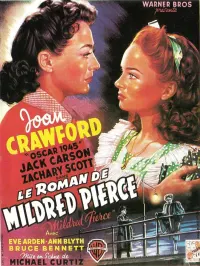




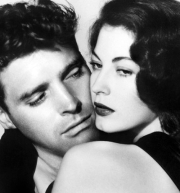













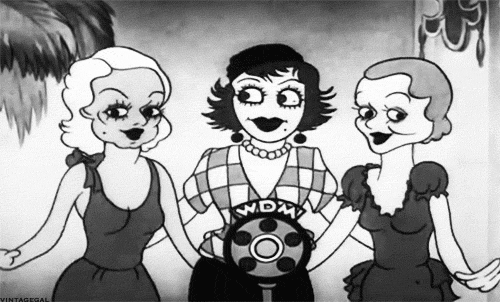


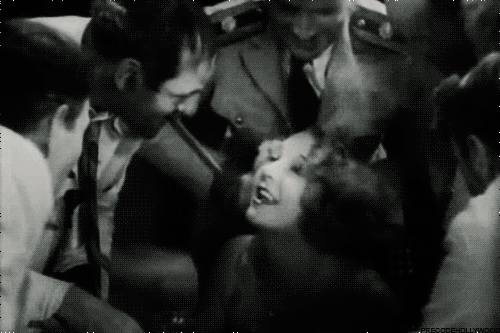


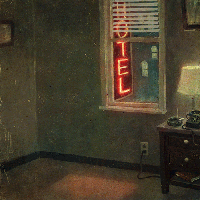
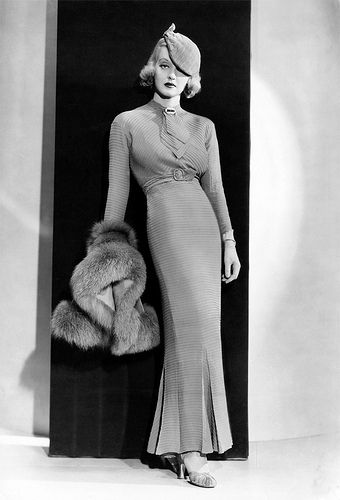



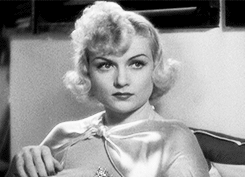
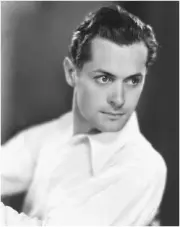
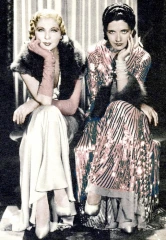

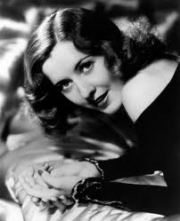



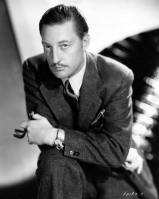




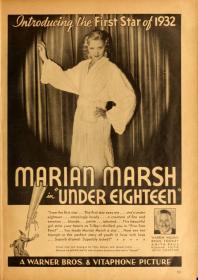
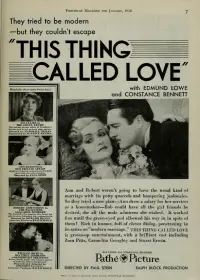

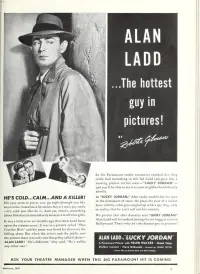
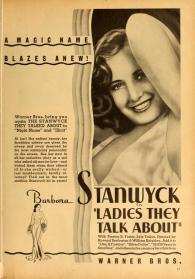

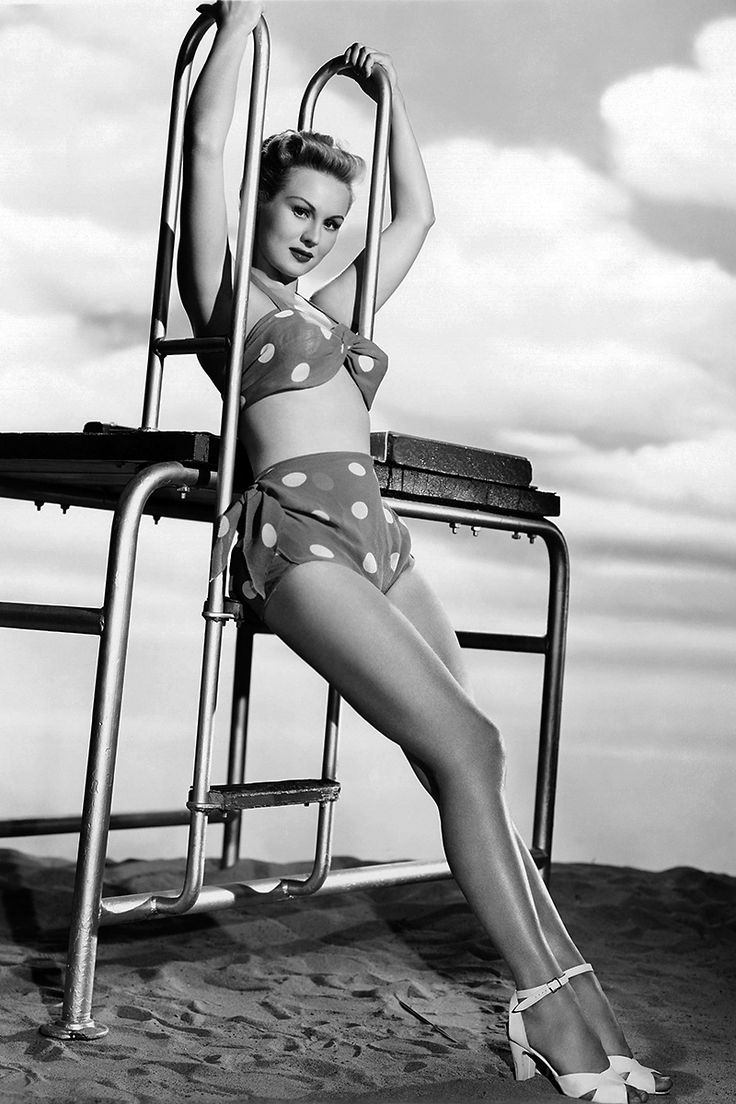



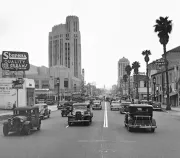
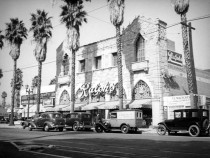


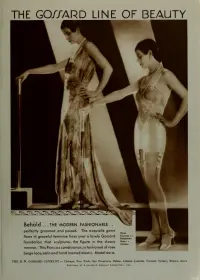

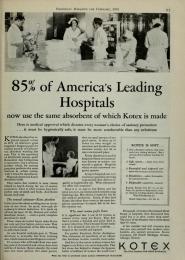

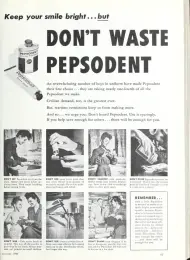


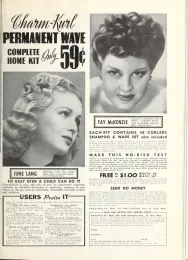





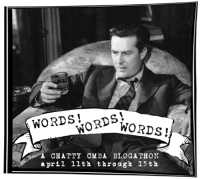

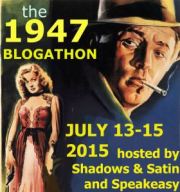
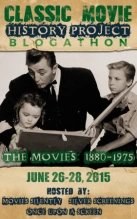
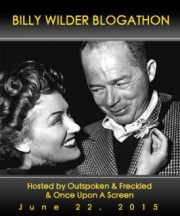


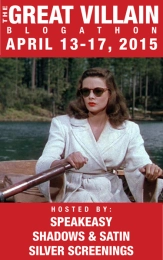


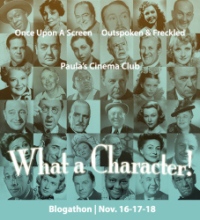
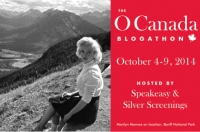


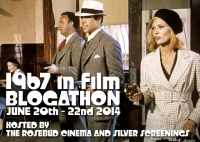


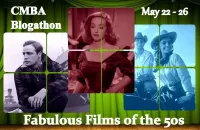
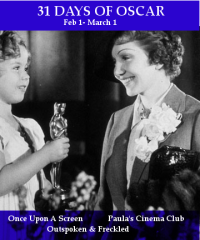
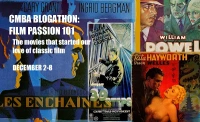







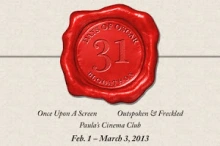

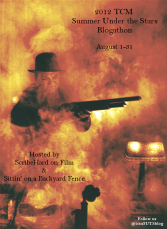


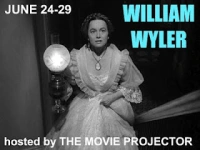





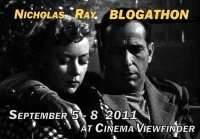

Wow … what a fantastic look at the life of Isabel Jewell. It’s unfortunate that Hollywood didn’t take full advantage of her talents.
Thanks, Brian! It is a shame that she didn’t get a better break — I just wish I could figure out why.
My introduction to Isabel Jewell was in the westerns “Badman’s Territory” and “Belle Starr’s Daughter”. She seemed really at home on the range and I was surprised that she wasn’t cast in more of the same.
She could break your heart or be a pal. Even if the part was bit with one or two lines, you could see the wealth of talent behind those eyes. It was a revelation to learn about the woman behind the actress.
I read that Isabel was quite the horsewoman, having grown up on a ranch in Wyoming, and that she finally got the chance to show these skills in the movies you mentioned. I love your description — that she could break your heart or be a pal. That’s for sure.
[…] *Shadows and Satin | Isabel Jewell […]
It’s here! The Funny Lady Blogathon! | Movies, Silently said this on June 30, 2013 at 9:41 am |
[…] *Shadows and Satin | Isabel Jewell […]
UPDATE: Funny Lady Blogathon | Movies, Silently said this on June 30, 2013 at 9:44 am |
[…] *Shadows and Satin | Isabel Jewell […]
Funny Lady Blogathon | Movies, Silently said this on June 30, 2013 at 9:45 am |
Karen, I must admit that the only Isabel Jewell film I remember seeing was BORN TO KILL, but your excellent bio of her films really touched me and had me wishing she’d accomplished more of the goals she seemed to have wanted so much. At the very least, Counsellor-at-Law sounds like a hoot,I’m still laughing out loud over “Sure I missed you – like Booth missed Lincoln!” This was a great choice for the Funny Lady Blogathon!
Thanks, Dor! I hope you’ll get to see Counsellor-at-Law and some of her other films — I know you’ll like them.
I’m ashamed…I never even heard of Isabel Jewell! Than you for highlighting her. I didn’t realize I’ve seen so many of her films and didn’t even know her name. 😮
Thanks so much for your comment, Constance — I’m so glad that now you know Isabel’s name!
Hi! Thank you so much for all of your hard work and research, presenting the tale of Isabel Jewell’s life so beautifully. It’s a shame that this talented actress had a sad end. Thanks for giving us a sample of her wonderful body of work, though!
Thank you so much, Gwen! And thanks for hosting such an awesome blogathon. If you hadn’t, I never would have learned so much about Isabel.
Thank you for the informative bio of Isabelle Jewell. Very talented but also a very troubled lady. I first became aware of her for her small, but memorable parts in the Lewton films Leopard Man (as the fortune teller) and 7th Victim (as a beautician). You’re right, she really takes that scene in Bombshell with that “I’m getting sober” line. And if you haven’t seen it, Evelyn Prentice is worth checking out. Not prime Powell/Loy, but well worth viewing.
Have you ever written about Lee Tracy? He was a firecracker of a screen actor as well.
Hi, Charles — thank you! You’re so right — she was talented but troubled, poor thing. Don’t you just love that line in Bombshell? I watched it over and over the other night. I’ve never written about Lee Tracy, but I’m giving it some thought! I find the Mexico incident to be quite fascinating — I’m not sure how it went from from his blanket slipping off in 1930 to urinating on a crowd in 2013. I know I have a tendency to not want to believe the worst, but I just really want to know where that extra bit of information came from!
I love Jewell in ‘Counsellor at Law’, where she gives an amazing performance – ‘Beauty for Sale’ also sounds like a must from your description! Great to learn so much about her life. it’s a pity that she had so many problems, but she achieved so much all the same.
Thanks so much for your comment, Judy. I hope you get to see Isabel in Beauty for Sale — I know you’ll like her performance. She was really something.
I am ashamed to say I had never heard of Isabel Jewell even though I’ve seen some of these movies. Thanks for providing such a lovely and thorough tribute – one which she really deserves.
Better late than never, Ruth! Thank you so much for your kind words!
[…] going to say it was my entry for this year’s Funny Lady Blogathon, a profile of the actress Isabel Jewell. I only knew about Jewell from Gone With the Wind and a handful of pre-Codes, and I was moved to […]
Thanks you for this lovely review of Isabel’s life. It is the most extensive research I’ve ever seen on her. I do believe there is a mistake as to where she is buried. I have taken pictures of most the graves in Shoshoni, Wyoming and don’t believe she was buried there. I believe she was buried in Los Angeles or Hollywood, California.
Thank you so much for your kind words, John, and for calling my attention to the error about Isabel’s burial. I have modified my post to reflect additional information I have found on a website about the final resting places of cast members in Gone With the Wind.
Thank you for the article. So well researched! Just wondering, are you sure Isabel is buried in Wyoming? Another website indicates her ashes were to be buried with her father in Wyoming, but they were spread at sea instead. Just wondering if you might know?
Thank you so much, Todd — you are the second person to call this gaffe to my attention. I’d meant to revise my post last week, but I totally forgot until I saw your comment. I have found additional, more specific information on a site on cast members from Gone With the Wind, and revised the post accordingly. I appreciate you letting me know!
What a wonderful article! I had loved her work in several of the phones you mentioned, but really didn’t know anything about her. Since reading this article, I want to find more of her work!
Thank you so much, Barry! Before I wrote the article, I didn’t know much about Isabel Jewell at all, but I just fell in love with her! Every